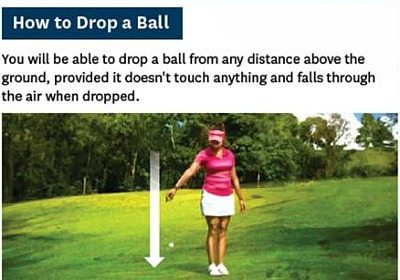The USGA announced the most sweeping rules changes in decades. The result of a four-year effort with the R&A to simplify the rules for golfers of all levels. There is a general consensus that the rules have become too complicated making them almost irrelevant for the majority of golfers.
“The overriding theme is that we were hearing from the golfer at all levels that the rules were complex and they were hard to understand. We are listening. The rules have become dense and, for many, too confusing”, said Thomas Pagel, Director of Rules & Education at the USGA.
The rules have also been seen as exceedingly unfair with several high profile professional situations highlighting this including Dustin Johnson at the 2016 US Open, Anna Nordqvist at the 2016 Women’s US Open and Lexi Thompson at the 2017 ANA Inspiration. Lastly, golf takes too long and several changes are being recommended to improve the pace of play.
pace of play.
The new rules have been reduced from 34 to 24 and have been written in a more user-friendly style with shorter sentences, commonly used phrases, bulleted lists and explanatory headings. The initiative also focuses on assessing the overall consistency, simplicity, and fairness of the Rules for play.
 Here are the ten most significant Rules changes.
Here are the ten most significant Rules changes.
- Time for Ball Search – Three minutes will be the maximum amount of time to search for a ball before it your lost, rather than the current five minutes.
- Leaving Flagstick in Hole – If you make a stroke from the putting green and your ball strikes the flagstick, there will no longer be a two-stroke penalty.
- Touching and Repairing on Putting Green – If will be OK to repair spike marks and any other damage caused by shoes, clubs and almost any other damage on a putting green but you will not be able to improve natural imperfections. You may also touch the putting green such as pointing out a line of the putt as long as it does not improve the conditions.
- Accidentally Moving Ball – You will not be penalized one stroke if you accidentally move your ball on the putting green, while searching for it or if it hits you, your ball marker, your equipment or your caddie.
- Relaxed Bunker Rules – You will be permitted to touch and move loose impediments as well as touch the sand with your hand or club without incurring a two-stroke penalty as long as the purpose is not to test the condition of the bunker. The prohibition against grounding the club immediately behind the ball or move sand during a practice or real stroke remains to preserve the challenge of playing from the sand.
- Relaxed Water Hazard Rules – You will be permitted to touch and move loose impediments and also ground your club when your ball is in a “penalty area” (the new broader definition for the area that includes water hazards).
- Relaxed Dropping Procedures – Rather than requiring the drop to be shoulder height, you may drop it from any height – such as a few inches. Rather than taking one or two club measurements to define the drop area, you will measure either 20 inches or 80 inches from the reference point. And a redrop will be required if the ball cannot roll outside of that drop area rather than only if it rolls “more than two club lengths”.

- Get Out of Bunker Option – If you deem your ball unplayable in a bunker, you can drop outside the bunker on the line between the ball on the flagstick with a two-stroke penalty.
- Replacing Moved Ball – If your ball moves for any reason on a putting green other than an intentional stroke, including accidentally moving it or external forces such as wind, the ball must be replaced on the original spot.
- Maximum Score Per Hole – A new “maximum score” form of stroke play is recognized, where a players score is capped a maximum number for a hole. Hence the player need not hole out.


4 thoughts on “Major Changes to The Rules of Golf”
Pingback: stromectol nz
Pingback: canadian pharmacies mail order
Pingback: canadian cialis
Pingback: https://graph.org/Omicron-Variant-Symptoms-Is-An-Excessive-Amount-Of-Mucus-A-COVID-19-Symptom-02-24